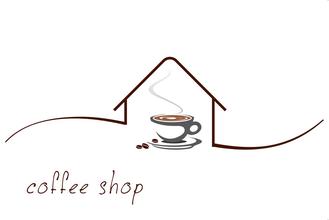Introduction of Colombian individual Flavor treatment Variety Taste grindability
Introduction to Colombian Coffee beans
(1) Acid: 30% in Colombia, 30% in Brazil, 20% in Guatemala, 20% in Mocha
(2) bitter: 30% in Colombia, 30% in Brazil, 20% in Kilimanjaro, 20% in Robusta.
(3) thick: Colombia 40%, Guatemala 20%, Mantenin 20%, Brazil 20%
(4) soft: 40% in Colombia, 30% in Brazil, 20% in Mocha, 10% in Robsta
Original coffee (without any other ingredients)
Coffee extraction methods: "steaming method", "pressure method", "gravity method", "leaching method", "ice brewing method".
The following is a brief introduction to several single coffee extraction tools and how to use them.
a. Siphon pot (with acting effect, the most common method of making coffee)
b. Filter paper dripping (also known as hand flushing, the simplest method of punching)
c. Steam pressurized kettle (the best flavor in Italy)
d. Ice drip kettle (take some time to enjoy the coffee)
e. American filter drip pot (popular for a time, more popular with Americans)
f. French filter kettle (the most common household coffee extraction method in France)
Siphon pot (Syphon)
Features: siphon unique charm, you can enjoy the whole process of brewing coffee beans into coffee, focusing on the process of operation.
The siphon pot is connected by a heating container and a funnel container. The connecting part is a filter with coffee dust on it. After boiling in the heating container, the water goes into the funnel container and mixes with the coffee powder; at this time, the heating source is cut off, and the partial vacuum formed by the cooling of the heating container pulls the coffee back to the bottom through the filter.
1. Check the siphon pot upper / lower seat and filter, filter cloth is in good condition, timer, stirring bar, coffee spoon is complete.
two。 The use of pure water, in order to improve the production speed, can directly heat hot water.
3. Add water according to the scale on the lower seat of the siphon pot (a little more than the actual amount of water).
4. Before heating the fire, dry the water droplets outside the upper / lower seat of the siphon pot with a mouth cloth (to prevent the siphon kettle from being damaged).
5. Add hot water to the coffee cup or put it on a cup warmer to warm the cup (to prevent the aroma and acidity of the coffee from increasing).
6. Use 15 grams (about one and a half spoonfuls) of a cup of coffee and set the grinding scale to (2.5).
7. Place the filter retractor vertically down in the center of the upper seat and hook the glass tube (to prevent coffee grounds from flowing into the coffee).
8. When the water is heated to a small bubble, insert the upper seat of the siphon pot into the water.
9. When the water rises to the upper seat, turn off the fire, remember the time, stir at the same time, and stir 5-6 times clockwise.
10. After 30 seconds, the wooden stirring stick is inserted into the coffee 2Pot 3 for a second stir.
11. Except (Blue Mountain, Kona, Hawaii), turn off the heat for 45-50 seconds, all other coffees are heated for 60 seconds.
twelve。 First release the pressure in the lower seat, and then shake off the upper seat (move slowly to avoid damage to the appliance).
13. Pour the coffee into a preheated coffee cup and attach a coffee plate, coffee spoon, milk grains and sugar packet. [3]
Filter paper dripping
Features: the method is simple, the filter paper must be changed once, it is clean and hygienic, and the amount of water can be adjusted according to one's own taste.
1. Fold the professional filter paper and put it correctly into the brewing cup.
two。 Use a professional coffee powder spoon to pour the coffee powder into the filter paper according to the number of people, and then flatten the coffee powder surface.
3. Put 95-100 degrees hot water into a special pointed pot and let the hot water slowly soak all the coffee powder.
4. When the coffee is fully expanded, pour hot water into the coffee powder surface for the second time, pay attention to the amount of water used.
5. Remove the brewer when the coffee is almost dripping. [3]

Important Notice :
前街咖啡 FrontStreet Coffee has moved to new addredd:
FrontStreet Coffee Address: 315,Donghua East Road,GuangZhou
Tel:020 38364473
- Prev

Introduction of grinding scale for taste characteristics of Ugandan coffee flavor description treatment
Uganda coffee bean flavor description treatment method introduces the quality grade of Ugandan coffee: Bugisu Bugisu AA (only 4% of the total national production) Bugisu Bugisu A Vago Wugar A (above are water washing treatment) and a small amount of sun-dried bean beads Drugar Bugisu Bugisu AA where AA represents the grade of coffee and represents the highest grade in the country. Boogie
- Next

Introduction to the variety characteristics of the description treatment method of Ethiopian Sidamo Lion King flavor coffee beans
Sidamo Lion King Coffee is produced by Xilisha Cooperative near Dilla town. The cooperative was founded in 1976 and is now a member of the SCFCU of the Sidamo Farmers' Cooperative Union. We have screened the coffee again, and the selected batch has excellent flavor, which tends to be honey, citrus and coffee flowers. The coffee in Sidamo is very flavored.
Related
- Detailed explanation of Jadeite planting Land in Panamanian Jadeite Manor introduction to the grading system of Jadeite competitive bidding, Red bid, Green bid and Rose Summer
- Story of Coffee planting in Brenka region of Costa Rica Stonehenge Manor anaerobic heavy honey treatment of flavor mouth
- What's on the barrel of Blue Mountain Coffee beans?
- Can American coffee also pull flowers? How to use hot American style to pull out a good-looking pattern?
- Can you make a cold extract with coffee beans? What is the right proportion for cold-extracted coffee formula?
- Indonesian PWN Gold Mandrine Coffee Origin Features Flavor How to Chong? Mandolin coffee is American.
- A brief introduction to the flavor characteristics of Brazilian yellow bourbon coffee beans
- What is the effect of different water quality on the flavor of cold-extracted coffee? What kind of water is best for brewing coffee?
- Why do you think of Rose Summer whenever you mention Panamanian coffee?
- Introduction to the characteristics of authentic blue mountain coffee bean producing areas? What is the CIB Coffee Authority in Jamaica?

